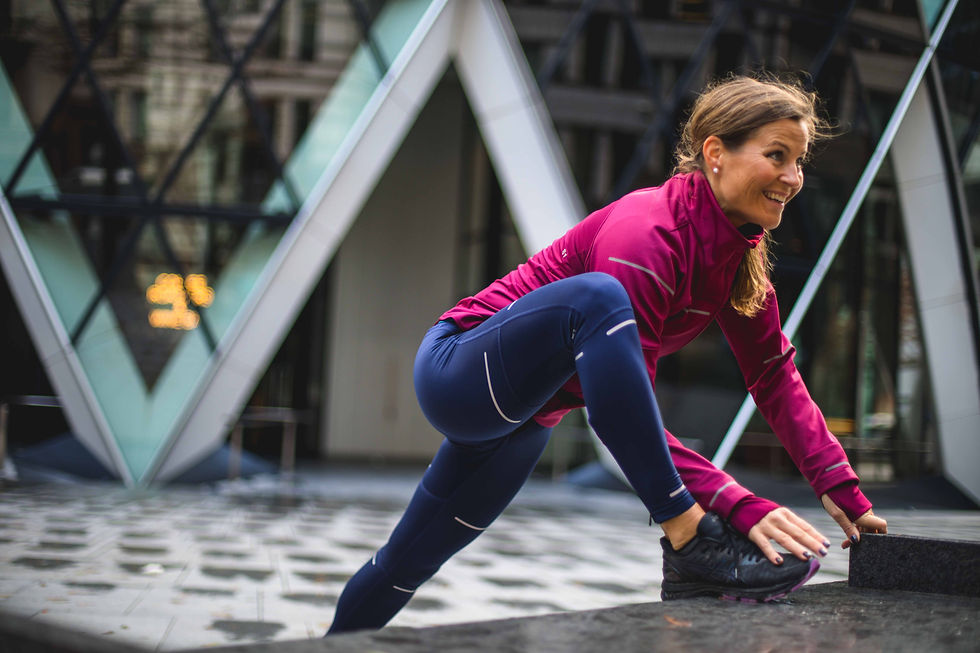
"How Should I Warm Up?"
It's one of my most frequently asked questions. And honestly, I love answering it! I never get tired of this question. I like to say the best warm-up is anything that makes you sweat. But that's not the entire truth.
I don't think anyone disagrees with me when I say: YOU NEED TO WARM UP.
Still, though, a lot of people underestimate this part of the workout. The science of warming up has been pretty solidly studied and agreed upon for at least the last 30 years.
The practice of it? Not so much.
Let's look at the physiological purpose of a warm up and use that to find the BEST method.
Spoiler alert: It's not stretching. Don't stretch for a warm up. It's not effective, and it might actually hurt you.
Your Goals During The Warm Up Should Be:
1. Increase blood flow to the muscles
2. Increase respiratory rate
3. Increase body temperature
4. Increase proprioception
5. Stimulate post-activation potentiation
6. Transition into the main activity
Increased Blood Flow
Exercise increases heart rate, which ups blood flow, which increases the amount of oxygen being delivered to your working muscles. Oxygen is needed in high amounts for muscle contraction. With more blood flow, your muscles work longer.
A warm up that increases your heart rate to 60% of your maximum is ideal. The intensity should not drain your energy.
Increased Respiratory Rate
If your breathing goes up, you'll absorb more oxygen and send it to the working muscles. Captain obvious over here.
Fun fact: The faster your heart rate and breathing goes up, the more fit you are. If your body is trained for exercise, it will recognize exercise immediately, and begin preparing for it.
An out-of-shape person will have a gap between the onset of exercise and the need for oxygen. This will reduce performance, or worse, cause some health issues.
Increased Body Temperature
Increasing the body temperature makes you more resilient. Warm joints are less sensitive to pain, and usually a higher intensity can be reached.
Body temperature also helps regulate and control core enzyme activities like ATP production in the cells. Typically, the higher the body temperature, the faster the cellular functions.
Did you know that? Neat, huh?
Increased Proprioception
This is a fancy word for "knowing where you are in 3-Dimensional space." Your tendons and muscles have sensors that detect how stretched they are (Golgi Tendon Organs). A good warm up allows your tendons, ligaments, and muscles to "feel out" their range of motion.
True story: Many ankles have been sprained and dislocated due to sudden movement and an unfortunate lack of warming up.
Yes, I'm talking about me.
Create Post-Activation Potentiation
Once a muscle has contracted, it is easier to elicit a similar / more powerful contraction. This is called post-activation potentiation. Muscles are stimulated by neurons and electrical signals. These signals tell a muscle to "go!" (Contract).
It happens very fast.
A muscle is more easily excited and ready to "go!" again after the first contraction.
An example would be push-ups. If you were to drop into a set of 10 push-ups while cold, wait 30 seconds, then do a second set of push-ups, it's very likely that the second set will feel easier than the first.
That's PAP for you.
Transition Into the Main Activity
The warm up should transition into the main activity with minimal interruption. Swimming is great low-intensity exercise. I wouldn't swim as a warm up before training Judo because then my uniform would be wet and I would smell of chlorine.
People hate it when you smell like chlorine.
Warm ups tend to be more effective when they replicate the main activity, so there's no "learning curve" for your muscles. They're ready to go.
I Still Didn't Answer The Question
What's the best warm up?
Pick a move that's as close to the main event as possible (skill wise), without a huge learning curve. It should start as a movement anyone can replicate immediately, and transition into a more skill-based movement as the warm up progresses.
It should make you sweat and breath faster without draining your energy.
Five minutes is all you need.
So get creative!
For runners: Jogging variations that stimulate the knees, hips, and ankles. Light jogging or calisthenics that move your body through full range of motion.
For weight lifters: Light sets of high reps close to the exercise you're doing. For example, 2-3 sets of 25 dumbbell presses or push-ups BEFORE bench pressing.
For team sports like basketball, football, etc: Low-intensity movement drills and ball handling drills that get the athletes moving without much technical instruction. Minimal contact, maximum movement.
For combat sports: Solo or partner drills that replicate the main techniques, move the joints, but require minimal technical instruction. If you need a 2-day seminar to learn a warm up move, it's too complicated.
What's Up With Stretching?
I mentioned earlier that stretching is a poor warm up. If you think about it, stretching accomplishes nothing from the list above except for maybe proprioception.
Muscles are like taffy. The warmer they are, the more flexible they are. Stretching cold muscles probably won't tear anything, but it doesn't improve performance in any meaningful way. If it feels good, great! But that's not the best warm up.
Many people tell me "But I've always done it that way."
I guess change is bad, then?
MORE Information
Have a question about warming up? Hit me with it! Discuss this article HERE.
Is your warm up good enough? Want a FREE fitness consultation? Here you go!
.png)
コメント